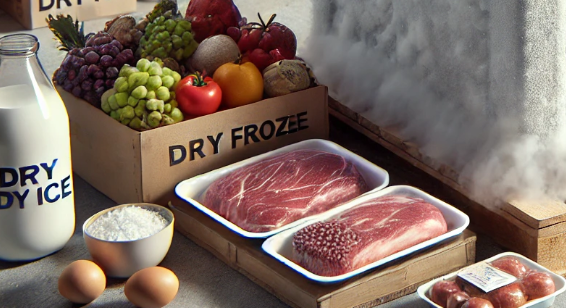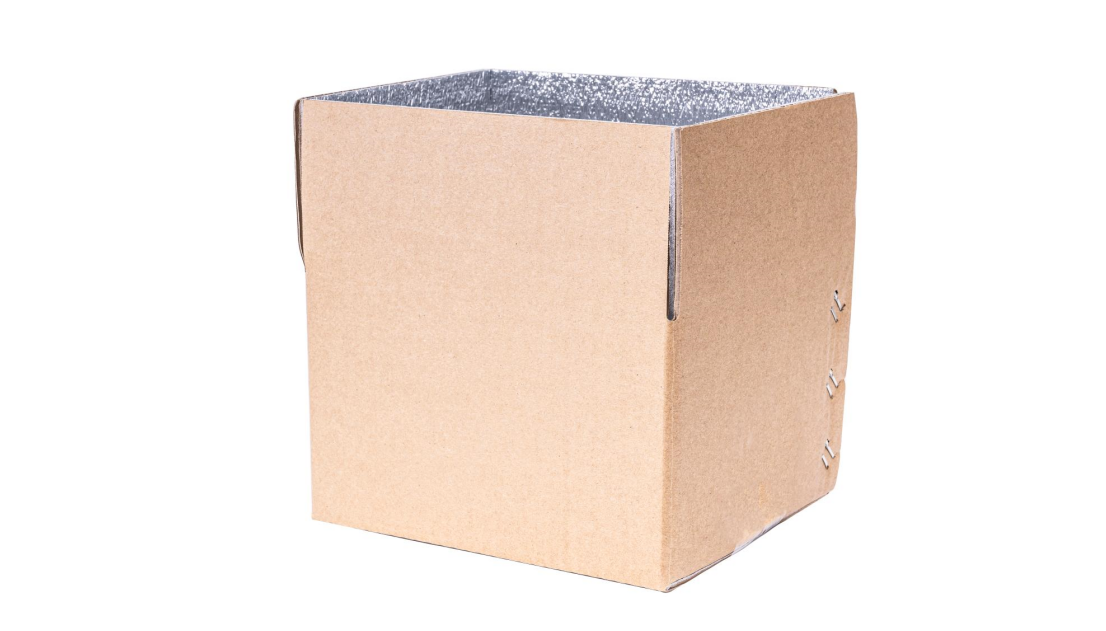Having a reliable and effective temperature control method is crucial when shipping meat. From the moment the product leaves your facility until it reaches the customer’s home, warehouse, or retail store, the temperature of the meat must remain within a specified range to prevent spoilage. This article explores the complex details of shipping frozen meat, including why temperature control is essential, effective insulation packaging methods, how to maintain low temperatures, transport time, and shipping costs. If you have any questions about how to ship meat, we hope this article provides comprehensive answers.
1. Why Temperature Control is Crucial for Meat Shipping
Preventing Microbial Growth:
Perishable foods like meat and poultry must always be kept below 40°F (about 4°C) to prevent rapid bacterial growth. Bacteria such as Salmonella, E. coli, and Listeria thrive in warm environments, but maintaining low temperatures can effectively limit their growth, preventing foodborne illnesses and other health risks. Freezing meat further restricts bacterial and microbial growth, making it an ideal method for storing and transporting meat products.
Maintaining Food Quality:
Temperature control directly affects the quality of meat, in addition to preventing microbial growth. Fluctuating temperatures can accelerate fat oxidation and protein breakdown in meat, leading to spoilage, discoloration, and off-flavors. Maintaining a consistent low-temperature environment extends the shelf life of meat, preserving its freshness and taste, and ensuring the final product’s quality.
Regulatory Compliance:
Many countries and regions have strict regulations regarding food transportation and storage, requiring that food be kept at safe temperatures during transit. Complying with these regulations ensures product quality and helps avoid legal liabilities and fines. Ensuring temperature control within the compliance range is a critical issue for every meat shipping company.
2. Utilizing Effective Insulation Systems
Choosing Insulation Materials:
To maintain the cargo’s low temperature, it is crucial to package products with appropriate insulation materials. We recommend using insulated box liners, which offer many advantages over other forms of temperature-controlled packaging, such as molded coolers. Insulated liners, like PopupLiner box liners, are reflective foam box liners that provide high-performance temperature control. They can be installed in corrugated boxes and loaded with goods in seconds. These custom liners are particularly effective because they offer both reflective and conductive insulation. Unlike other temperature-controlled packaging, reflective box liners are compact and space-saving, freeing up valuable warehouse space and labor.
Packaging Design:
High-performance insulation materials like PopupLiner and EcoLiner products can significantly enhance the thermal performance of packaging. These materials maintain internal temperature stability by reflecting thermal radiation and reducing heat conduction. Installing these insulation liners inside corrugated boxes allows for efficient and space-saving packaging.
Layered Packaging:
When placing meat products inside insulated packaging, it is recommended to use layered packaging. First, seal the meat products in leak-proof aluminum foil bags to prevent liquid leakage and contamination. Then, place the foil bags into a pre-cooled insulated box, and pack cold packs or dry ice around the meat to ensure even cooling. Finally, seal the insulated box with high-performance insulation materials to further enhance the thermal performance.
3. Choosing Cold Packs to Maintain Low Temperatures
Cold Packs:
For shipping fresh refrigerated meat, cold packs can be used instead of dry ice inside the meat packaging box. This avoids the hassle of handling hazardous materials and the associated labeling requirements. It is important to note that cold packs will not keep frozen meat frozen. As a general rule, the refrigerant used must be colder than the payload. Therefore, cold packs are best suited for shipping fresh meat. When designing a shipping protocol and packaging, it is advisable to conduct test shipments using cold packs to determine the number of packs needed and the amount of ounces per pack required to keep the cargo adequately chilled. Factors to consider include the available space for cold packs and the thickness of the insulation panels themselves.
Dry Ice:
The amount of dry ice used is limited. Once the weight of dry ice used exceeds a certain level, the package becomes hazardous. Dry ice, when used with high-performance foam insulation materials like PopupLiner and EcoLiner products, is an excellent choice for shipping frozen meat. A general rule of thumb for performance is that if dry ice is placed adjacent to frozen meat, the meat will typically remain frozen as long as there is some dry ice present. This rule can be used to determine the appropriate weight of dry ice for use in shipping packaging by measuring the sublimation rate when packed inside the chosen insulation material (thicker insulation generally provides longer life and slower sublimation).
Phase Change Materials (PCMs):
Phase change materials absorb or release large amounts of heat within a specific temperature range, maintaining a constant temperature. They can provide longer-lasting cooling effects than traditional refrigerants, making them ideal for long-distance shipping. When using phase change materials, it is important to select the appropriate phase change temperature based on specific transportation needs and to thoroughly pre-chill the materials.
4. Effective Packaging Methods
Using High-Performance Insulation Materials:
High-performance insulation materials like PopupLiner and EcoLiner products can significantly enhance the thermal performance of packaging. These materials maintain internal temperature stability by reflecting thermal radiation and reducing heat conduction. Installing these insulation liners inside corrugated boxes allows for efficient and space-saving packaging.
Layered Packaging:
When placing meat products inside insulated packaging, it is recommended to use layered packaging. First, seal the meat products in leak-proof aluminum foil bags to prevent liquid leakage and contamination. Then, place the foil bags into a pre-cooled insulated box, and pack cold packs or dry ice around the meat to ensure even cooling. Finally, seal the insulated box with high-performance insulation materials to further enhance the thermal performance.
5. Shipping Time and Cost
Selecting the Right Shipping Time:
Choosing the right shipping time is crucial to ensure that the meat maintains the appropriate temperature during transport. For overnight or next-day delivery, it is advisable to discuss your requirements with various carriers to determine the shipping rates for packages of different weights. If you anticipate a large volume of shipments, you can negotiate shipping rates. Understanding this during discussions can save significant costs.
If overnight shipping is not necessary for the customer, it is worth asking, “What is the slowest speed at which I can ship the product while still ensuring it arrives safely?” Many meat shipping companies believe that to ensure product safety, goods must be delivered overnight. However, it is important to consider that two-day shipping is much cheaper and may meet your needs. Lowering the costs borne by customers can increase your profits, and if passed on to your end-users, you will become a more competitive supplier.
Cost Control:
When designing shipping protocols, it is advisable to conduct test shipments using cold packs or dry ice to determine the optimal amount of refrigerant needed. Finding a balanced solution that considers shipping costs and temperature control effects is crucial. Using high-performance insulation materials can reduce the amount of refrigerant needed, thereby lowering shipping costs. Additionally, negotiating shipping rates with carriers, especially for large-volume shipments, can further reduce costs.
6. Specific Operational Recommendations
Testing and Validation:
When designing a shipping plan, it is recommended to conduct actual testing and validation. Package test shipments at your facility and monitor temperature changes using temperature probes to ensure the packaging plan can maintain the meat’s low temperature throughout the shipping process. Testing can help determine the optimal amount of refrigerant and packaging methods, ensuring the reliability of the shipping plan.
Temperature Monitoring:
Real-time temperature monitoring during shipping is critical. Using temperature recording devices, such as temperature probes or data loggers, can record temperature data throughout the shipping process. If temperature anomalies occur, timely measures can be taken to ensure the quality and safety of the meat.
Efficient Shipping:
For overnight or next-day delivery, it is advisable to discuss your requirements with various carriers to determine the shipping rates for packages of different weights. If you anticipate a large volume of shipments, you can negotiate shipping rates. Understanding this during discussions can save significant costs.
If overnight shipping is not necessary for the customer, it is worth asking, “What is the slowest speed at which I can ship the product while still ensuring it arrives safely?” Many meat shipping companies believe that to ensure product safety, goods must be delivered overnight. However, it is important to consider that two-day shipping is much cheaper and may meet your needs. Lowering the costs borne by customers can increase your profits, and if passed on to your end-users, you will become a more competitive supplier.
7. Conclusion
In conclusion, having reliable and effective temperature control methods is essential when shipping meat. By using high-performance insulation materials, properly configuring refrigerants, employing effective packaging methods, and monitoring temperatures in real-time, you can ensure the quality and safety of meat during transit. Choosing the appropriate shipping method and refrigerant configuration based on transportation distance, time, and product needs will provide a reliable solution for cold chain logistics. If you need more specific advice or assistance, please contact our team, and we will do our best to help.
Through scientific cold chain management and optimized shipping solutions, you can effectively reduce costs, improve shipping efficiency, and ensure the freshness and quality of meat products, thereby enhancing customer satisfaction and market competitiveness. We hope this article provides comprehensive guidance to help your meat shipping business run smoothly.
Post time: Aug-21-2024
